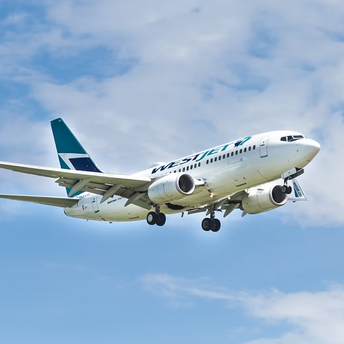Poland’s Central Airport Project: Aiming to Become Europe’s Newest Transit Hub

Poland is embarking on an ambitious project that could reshape the European aviation landscape: the construction of the Central Transport Hub (CPK), a massive airport and transport infrastructure initiative designed to position the country as a key transit hub for both Europe and beyond. Located between Warsaw and Łódź, the Central Transport Hub is expected to become one of the largest airports in Europe, capable of handling up to 45 million passengers annually upon completion, with the potential to expand even further.
This project is more than just the creation of a new airport—it represents Poland’s vision of becoming a major player in global air travel, tapping into the growing demand for connectivity and reinforcing its strategic position in Europe.
A Vision for Connectivity: Poland’s New Transport Gateway
Poland’s Central Transport Hub, also known as Solidarity Airport, is designed to address both domestic and international needs. Situated about 40 kilometers from Warsaw, the airport will serve as a key hub for passengers traveling to and from Central and Eastern Europe. The project, however, goes beyond air travel; it is part of a broader vision that integrates rail, road, and air networks to enhance overall connectivity.
The Central Transport Hub is expected to serve as a crucial link between major European cities and countries, connecting not only Poland’s growing aviation market but also facilitating smoother transit between Western and Eastern Europe. The airport’s strategic location near Poland’s capital, combined with its planned capacity to accommodate a growing number of long-haul flights, could make it a key stopover for international travelers.
Why Poland? The Strategic Importance of CPK
Poland’s decision to pursue this bold infrastructure project stems from its geographical advantage. Situated at the crossroads of Western and Eastern Europe, Poland is ideally positioned to capture both intra-European traffic and long-haul routes between Europe, Asia, and North America. As air travel continues to rebound and grow in the post-pandemic world, Poland is betting on increased passenger traffic and the need for a modern, efficient transit hub that can relieve congestion at other major European airports, such as London Heathrow, Frankfurt, and Amsterdam Schiphol.
In addition to geographic positioning, Poland has experienced a surge in economic growth in recent years, driving an increase in both business and leisure travel. Warsaw’s Chopin Airport, currently Poland’s busiest airport, has been facing capacity constraints due to growing demand. The Central Transport Hub is designed to alleviate this pressure while also allowing Poland to assert itself as a major player in international aviation.
A Multi-Modal Hub: Linking Air, Rail, and Road
What sets Poland’s Central Transport Hub apart from many other airport projects is its focus on creating an integrated transport system. The hub will not only feature a world-class airport but will also be a centerpiece of Poland’s national infrastructure network, connecting passengers seamlessly to high-speed rail and road transport.
Plans for the hub include the construction of a new high-speed rail system, with the airport serving as a central station connecting cities like Warsaw, Krakow, Gdansk, and Wroclaw. This rail network is expected to drastically reduce travel times between Poland’s major cities, making the Central Transport Hub a vital part of the country’s transportation ecosystem.
For passengers flying into the airport, the ability to transfer easily to high-speed trains and road networks will enhance the overall travel experience, making it easier to reach key destinations both within Poland and across Europe. The integration of multiple transport modes will not only improve accessibility but will also reduce the need for multiple airport transfers, a significant advantage for both business and leisure travelers.
Eco-Friendly Infrastructure: A Sustainable Future
In line with the growing global focus on sustainability, Poland’s Central Transport Hub aims to be an eco-friendly and energy-efficient project. The airport will incorporate modern technologies and design elements to minimize its environmental impact. Renewable energy sources, such as solar power, will play a key role in powering the airport’s operations, while eco-friendly construction practices are expected to reduce its carbon footprint during the building phase.
Moreover, the integrated rail system will encourage passengers to use public transport, further reducing emissions from road travel. Poland is keen to position the Central Transport Hub as a leader in sustainable aviation infrastructure, setting a benchmark for future airport projects in Europe.
Challenges and Opportunities Ahead
While the Central Transport Hub holds immense potential, it is not without its challenges. The sheer scale of the project requires significant financial investment, and the development timeline is ambitious. The first phase of the airport is projected to open in 2027, with continued expansion planned over the following years.
Additionally, competition from established European hubs presents another hurdle. Airports such as Frankfurt, Amsterdam, and Istanbul already have strong networks and are well-established transit hubs for international travel. Poland’s Central Transport Hub will need to carve out its niche, focusing on efficiency, convenience, and cost-effectiveness to attract airlines and passengers alike.
Despite these challenges, Poland’s Central Transport Hub presents a unique opportunity to fill a growing gap in Europe’s aviation market. As air traffic rebounds and demand for both intra-European and long-haul travel increases, Poland is positioning itself to become a central player in the future of global aviation.



















